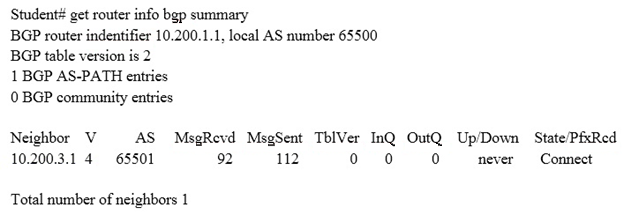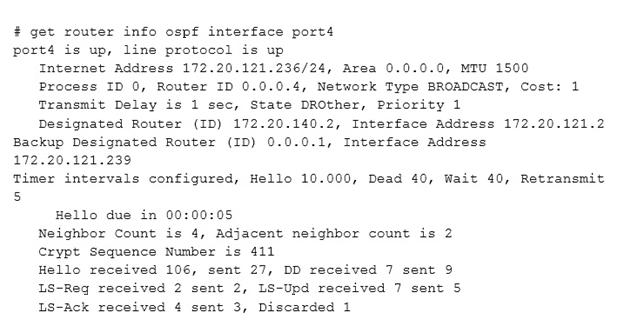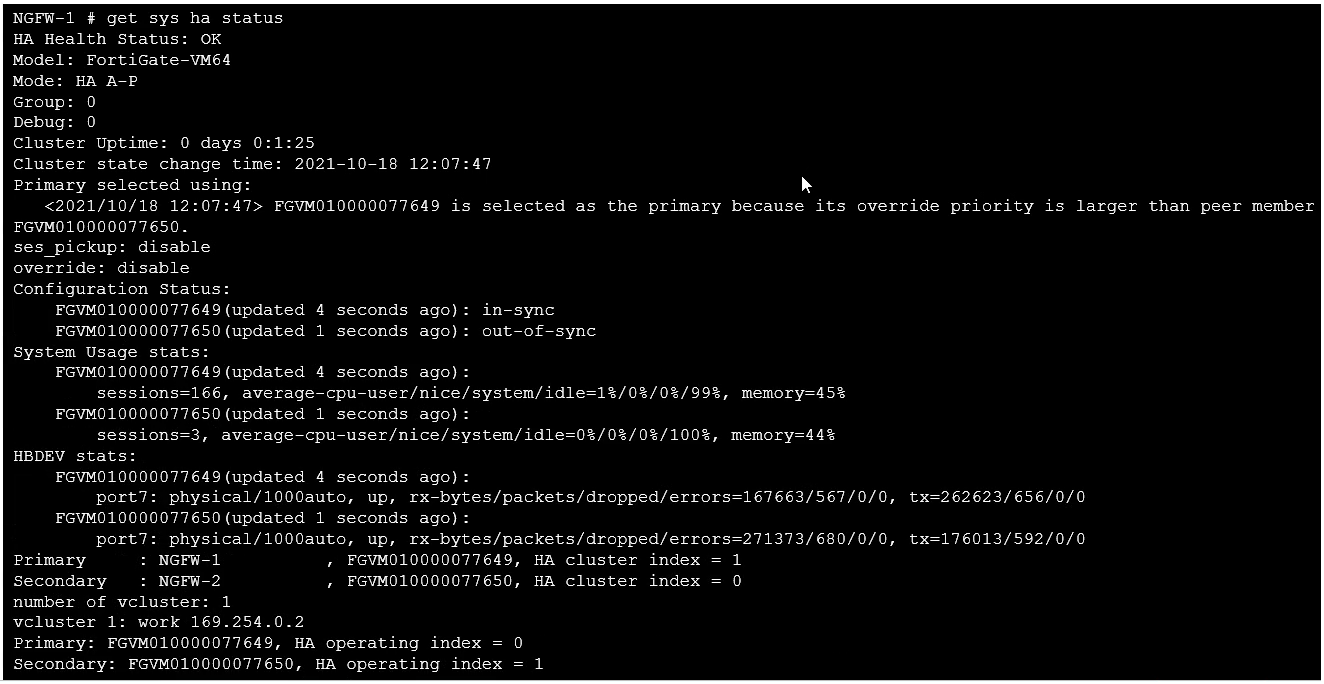Fortinet NSE7_EFW-7.0 - Fortinet NSE 7 - Enterprise Firewall 7.0
Which two tasks are automated using the Import Configuration wizard on FortiManager? (Choose two.)
Which three conditions are required for two FortiGate devices to form an OSPF adjacency? (Choose three.)
An administrator added the following Ipsec VPN to a FortiGate configuration:
configvpn ipsec phasel -interface
edit "RemoteSite"
set type dynamic
set interface "portl"
set mode main
set psksecret ENC LCVkCiK2E2PhVUzZe
next
end
config vpn ipsec phase2-interface
edit "RemoteSite"
set phasel name "RemoteSite"
set proposal 3des-sha256
next
end
However, the phase 1 negotiation is failing. The administrator executed the IKF real time debug while attempting the Ipsec connection. The output is shown in the exhibit.


What is causing the IPsec problem in the phase 1 ?
An administrator has created a VPN community within VPN Manager on FortiManager. They also added gateways to the VPN community and are now trying to create firewall policies to permit traffic over the tunnel; however, the VPN interfaces are not listed as available options.
What step must the administrator take to resolve this issue?
A FortiGate's portl is connected to a private network. Its port2 is connected to the Internet. Explicit web proxy is enabled in port1 and only explicit web proxy users can access the Internet. Web cache is NOT enabled. An internal web proxy user is downloading a file from the Internet via HTTP. Which statements are true regarding the two entries in the FortiGate session table related with this traffic? (Choose two.)
Which of the following conditions must be met for a static route to be active in the routing table? (Choose three.)
An administrator has configured a dial-up IPsec VPN with one phase 2, extended authentication (XAuth) and IKE mode configuration. The administrator has also enabled the IKE real time debug:
diagnose debug application ike-1
diagnose debug enable
In which order is each step and phase displayed in the debug output each time a new dial-up user is connecting to the VPN?
Examine the output of the ‘get router info bgp summary’ command shown in the exhibit; then answer the question below.

Which statement can explain why the state of the remote BGP peer 10.200.3.1 is Connect?
Examine the output of the ‘get router info ospf interface’ command shown in the exhibit; then answer the question below.

Which statements are true regarding the above output? (Choose two.)
Refer to the exhibit, which shows the output of get system ha status. NGFW-1 and NGFW-2 have been up for a week.

Which two statements about the output are true? (Choose two.)



